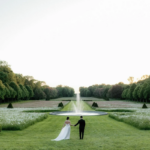Gone are the days of the groom who simply says “yes” to the date and the tie. Today, the groom’s role includes bringing taste, vision, and understated elegance. And when the wedding is a bespoke creation, his involvement makes all the difference.
Groom things to do before wedding

The Proposal
Let’s not forget that everything begins with the proposal. While we live in a modern world where anyone can pop the question, many men still feel it’s their role to take the lead.
Quick Tips for Planning the Perfect Proposal
Naturally, you want everything to go smoothly—so here are our top tips to help you plan like a pro:
- Choose a location that holds special meaning for both of you and reflects your partner’s personality.
- If you’re unsure about choosing the ring, ask someone close to your fiancée for guidance—her mom, sister, or best friend can be great allies.
- Practice what you’re going to say—it doesn’t need to be perfect, just heartfelt.
- Consider hiring a wedding planner, photographer, or even a musician to elevate the moment and make it truly unforgettable.
- Turn the proposal into an experience—plan a romantic dinner, a photoshoot with the new ring, or even a surprise night at a charming hotel.
Groom Involvement in Wedding Planning
Gone are the days when the groom took a backseat in wedding planning, leaving everything to the bride. Today, grooms are eager to be involved—selecting vendors, shaping the celebration’s tone, and making decisions as a team. After all, planning a wedding is almost like a rehearsal for married life: together, you’ll define a shared vision, set a budget, navigate compromises, and make key choices side by side. It’s all part of ensuring the wedding truly reflects who you are as a couple.
Setting the wedding vision
Setting the wedding vision is one of the most exciting and important first steps in the planning process. It lays the foundation for every decision that follows—from the venue and décor to the guest list and dress code.
Imagine your ideal wedding
Start by setting aside time to talk about your ideal wedding—without any pressure or limitations. Ask each other:
- What kind of atmosphere do we want? (Romantic, relaxed, elegant, fun…)
- Where do we imagine getting married? (Beach, countryside, city rooftop…)
- How big or intimate do we want it to be?
- What are our top priorities? (Food, music, photography, location…)
A meaningful wedding vision goes beyond aesthetics. Ask yourselves:
- What do we want this day to represent?
- Do we want to honor any family or cultural traditions?
- What kind of experience do we want our guests to have?
This will help you create a celebration that feels authentic and personal.
Collect visual references that align with your vision—think colors, textures, flowers, lighting, attire, tablescapes. Tools like Canva, Pinterest, or even a shared Google Doc work great for this.
Guest list
The guest list is one of the most important steps when planning a wedding. It will impact all your budget requests—many vendors rely on this information to provide an accurate quote. That’s why it’s essential for both of you to sit down and create the list together, making sure it reflects everyone’s priorities.
A tip: your guest list will likely change a few times throughout the planning process—and that’s completely normal! Just make sure it doesn’t grow too much. Otherwise, you might run into issues later on, such as limited space at your venue.
Budget management
The groom’s involvement in wedding budget planning is essential to ensure the process runs smoothly, fairly, and aligns with the couple’s priorities. Begin with open and honest conversations with your partner about your shared vision for the wedding and your comfort levels regarding spending. Take time to familiarize yourself with typical wedding costs and the factors that influence pricing in your chosen location and season.
Next, agree on your priorities—whether it’s the venue, catering, entertainment, or photography—so your budget truly reflects what matters most to both of you. It’s important to create a detailed budget spreadsheet or use a wedding planning app to keep everything organized. If you’re working with a luxury wedding planner like Cassia Thomas, she offers online budget management tools to guide you through every step of the planning process.
Choosing your vendors
If you want a wedding that truly reflects your personality as a couple, it’s essential for both partners to be involved in selecting the vendors. If time is an issue, hiring a luxury wedding planner like Cassia Thomas is your best option. She’ll immerse herself in your wedding vision and curate a list of vendors that best align with your style and needs. This way, you won’t waste hours searching for the right professionals—Cassia already knows the industry inside and out and will expertly guide the entire process.
Tastings
When it comes to weddings, gastronomy plays a key role in setting the mood and elevating the celebration. And let’s be honest, most grooms love being involved in this part! After all, tastings are often one of the most enjoyable steps in the planning process. Sampling dishes, desserts, wines, and signature cocktails? No complaints there! Grooms often bring great suggestions to the table, especially when it comes to food and drink.
Wedding attire for the groom

While the bride’s dress often takes center stage, the groom’s attire is just as important in setting the tone and style of the wedding. Whether you’re going for classic elegance, modern sophistication, or something more relaxed, your outfit should reflect both your personality and the overall vibe of the celebration.
Here’s how to choose the perfect wedding look:
1. Consider the Wedding Style and Venue
The location and formality of the wedding will influence your choice. A black-tie affair calls for a tuxedo, while a beach or countryside wedding might suit a lighter suit or even a more casual ensemble.
2. Coordinate With Your Partner
Your outfit should complement your partner’s look. Discuss style, color palette, and formality level to ensure harmony in your overall aesthetic—especially for photos.
3. Don’t Be Afraid to Show Personality
Add subtle touches that express your style—whether it’s a custom lining in your jacket, unique cufflinks, a patterned tie, or colorful socks. These details make your look more personal and memorable.
4. Get a Proper Fit
Fit is everything. Whether renting or buying, invest in tailoring. A well-fitted suit or tux makes a huge difference in how you look and feel on the big day.
5. Start Early
Don’t leave it to the last minute. Begin looking at least three to four months in advance, especially if you’re going for a custom piece or require multiple fittings.
6. Involve the Groomsmen (if needed)
If your groomsmen will wear coordinated attire, choose something that complements your look without overshadowing it. It’s your day—your outfit should stand out.
Write vows
Your vows are the heart of your ceremony, your chance to speak directly to your partner and share what this commitment truly means to you. Whether poetic, heartfelt, humorous, or traditional, they should sound like you and reflect your relationship. Here is the step by step guide:
1. Reflect on Your Journey Together
Start by thinking about your story:
- When did you realize you were in love?
- What do you admire most about your partner?
- What challenges have you overcome together?
- How has your partner changed you?
2. Define What Love and Marriage Mean to You
Write a few lines about what this union means:
- What does “forever” look like to you?
- How do you define partnership?
- What values will guide your marriage?
This is where the vows come in. Think beyond “to have and to hold”—what do you specifically promise?
3. Make Personal Promises
- “I promise to always make you coffee first.”
- “I vow to listen, even when it’s hard.”
- “I promise to laugh with you and comfort you in times of sorrow.”
4. Keep the Tone True to You
- Romantic? Sentimental? Playful? All of the above?
Write in your own voice.
Don’t worry about sounding poetic—honesty is more powerful than perfection.
5. End with Intention
Finish with a strong final statement. Think of it as a quiet declaration of your forever:
- “I choose you today and every day.”
- “You are my home, and I will love you for all the days of my life.”
Curating the playlist
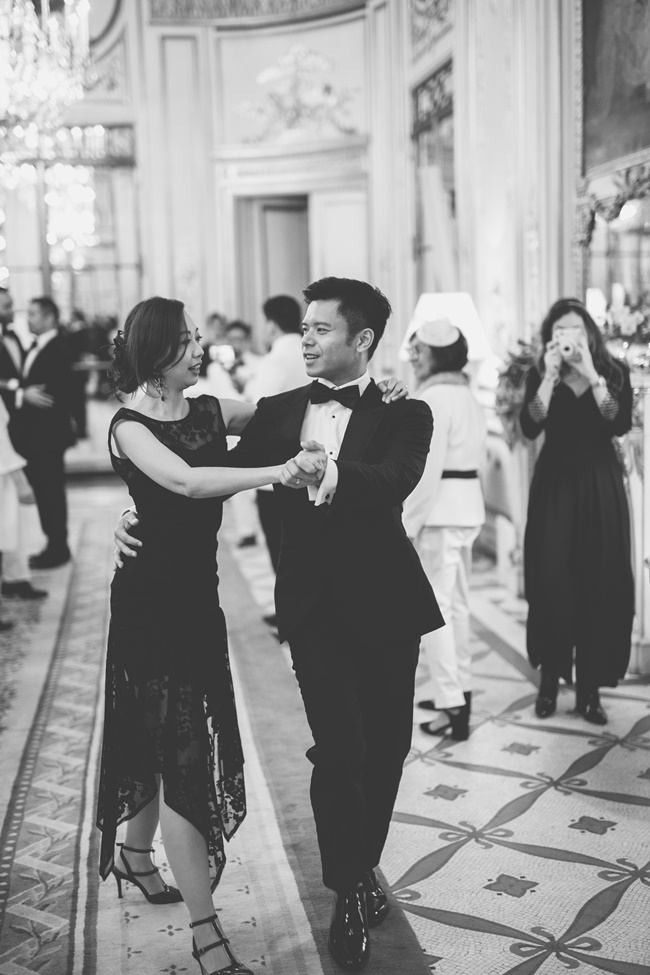
Music is one of the most powerful ways to make your wedding celebration feel personal and unforgettable—and every groom should have a say in it! Creating the playlist together can be a fun and meaningful part of the planning process.
Start by sharing your favorite artists and genres, as well as songs that reflect your relationship or mark special milestones. Think about tracks you’d love to hear during key moments like the ceremony, dinner, or party.
Don’t forget to mention any songs or styles you’d rather avoid. A shared “do-not-play” list can save you from awkward or unwanted surprises on the dance floor.
If you’re dreaming of an epic party, contribute songs you know will energize your guests—whether it’s old-school hip-hop, Brazilian funk, classic rock, EDM, or nostalgic throwbacks. Pick what gets your crowd moving.
Working with a DJ? Share your musical preferences early. A great DJ will use that input to craft a seamless soundtrack that reflects both of your personalities and keeps the celebration flowing from start to finish.
Dance
Grooms can—and absolutely should—be involved in the wedding dance experience! It’s not just about showing up for the first dance; it’s about helping set the tone and making those moments meaningful and fun.
Choose a song that reflects your relationship, a shared memory, or something that simply feels you. Don’t leave the decision entirely up to your partner—this is your moment too.
If you’re nervous about dancing in front of guests, taking a few lessons together can ease the pressure. It’s also a great bonding activity, full of laughter and connection. Whether you’re going for a classic waltz or a fun choreographed routine, practice makes it feel natural and smooth.
Grooms’ checklist for the wedding day
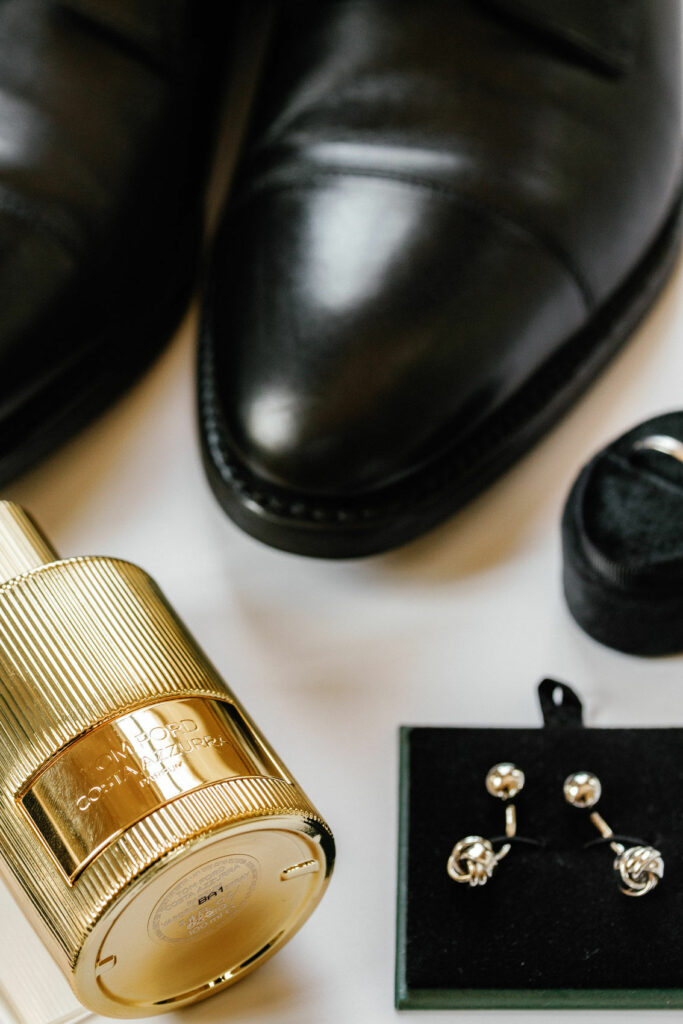
Everything you need to feel confident, calm, and ready to say “I do”:
Outfit Essentials
- Suit or tuxedo (pressed and ready)
- Shirt (clean and ironed)
- Tie, bowtie, or cravat
- Pocket square or boutonniere
- Belt or suspenders
- Dress shoes (polished)
- Socks (don’t forget fun or themed ones if you’ve planned them!)
- Undergarments
- Cufflinks and other accessories
- Watch or sentimental jewelry
Grooming Kit
- Shower and shave (or trim beard)
- Hair products and styling tools
- Deodorant (but no strong cologne—less is more)
- Toothbrush, toothpaste, mouthwash
- Lip balm and face moisturizer
- Nail clippers or file (just in case)
Important Documents
- Vows (printed or written in a vow book)
- Wedding rings
- Marriage license (if applicable on the day)
- Vendor payments or envelopes for tips
- Emergency contacts (planner, best man, vendors)
Extras
- A good breakfast (keep it light and energizing)
- Water and snacks
- Breath mints or gum
- Personalized gift or letter for your partner
- A quiet moment to breathe, reflect, or meditate
- Playlist or speaker for good vibes while getting ready
People & Time
- Coordinate timing with your best man and groomsmen
- Ensure transportation is confirmed (to the venue, to the photo session, etc.)
- Arrive early, not just on time
- Keep your phone charged (and then hand it off to someone else!)
Bonus Tip: Leave any stress to your wedding planner or best man—your only job is to show up relaxed, present, and ready to enjoy the moment.
Wedding Checklist for the Groom’s Family
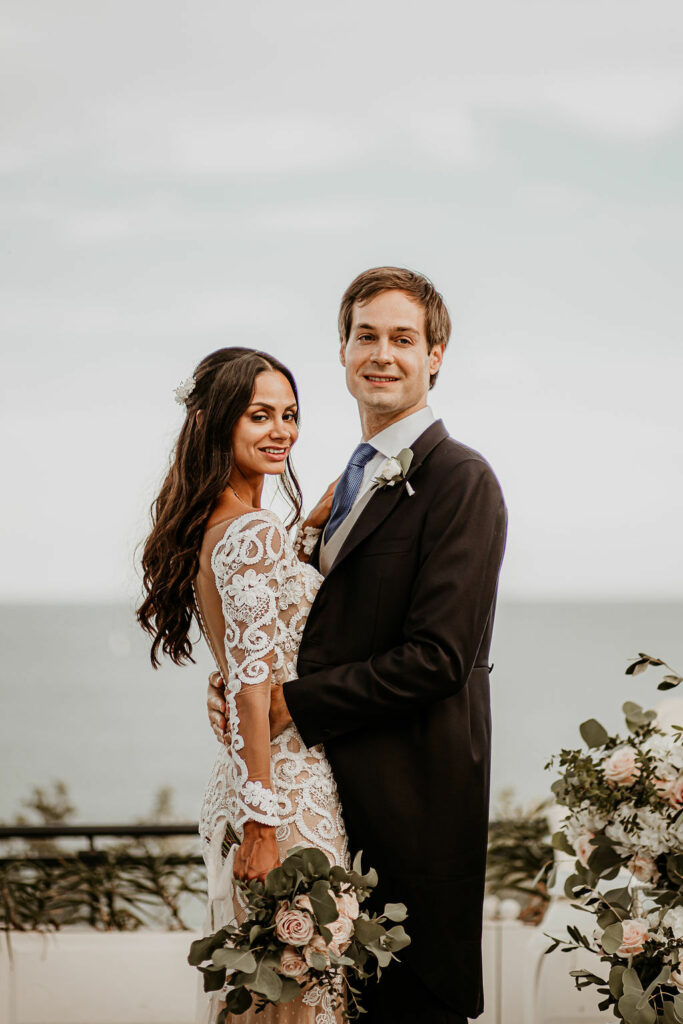
Before the Wedding
- Attend Engagement Celebrations: Join engagement parties or gatherings to support the couple.
- Help with Guest List: Provide names and contact info of family members or friends to invite.
- Assist with Invitations: Help address, send, or organize RSVP tracking if needed.
- Plan or Attend Pre-Wedding Events: Participate in or help organize bachelor party, rehearsal dinner, or family get-togethers.
- Offer Support: Help with errands, vendor recommendations, or logistics if the couple asks.
During Wedding Preparations
- Provide Emotional Support: Be available to encourage and help with last-minute stresses.
- Participate in Attire Fittings: Attend fittings or help with wardrobe coordination for family members.
- Contribute to Decorations: Assist with setting up or coordinating floral arrangements or family-specific details.
- Coordinate Transportation: Help organize rides for family members or ensure everyone knows the schedule.
On the Wedding Day
- Arrive on Time: Be punctual and ready for photos, ceremony, and celebrations.
- Help Welcome Guests: Assist in greeting and seating family members or close friends.
- Support the Groom: Offer calm, encouragement, and practical help as needed.
- Participate in Traditions: Take part in any family customs or cultural rituals.
- Celebrate Together: Enjoy the reception, dance, and share in the joy of the day.
After the Wedding
- Assist with Clean-Up: Help the couple or venue with packing or organizing belongings.
- Follow Up with Guests: Help send thank-you notes or follow-up messages if needed.
- Support the Couple’s Transition: Continue offering emotional or practical support as they start their married life.
Groom Wedding Traditions
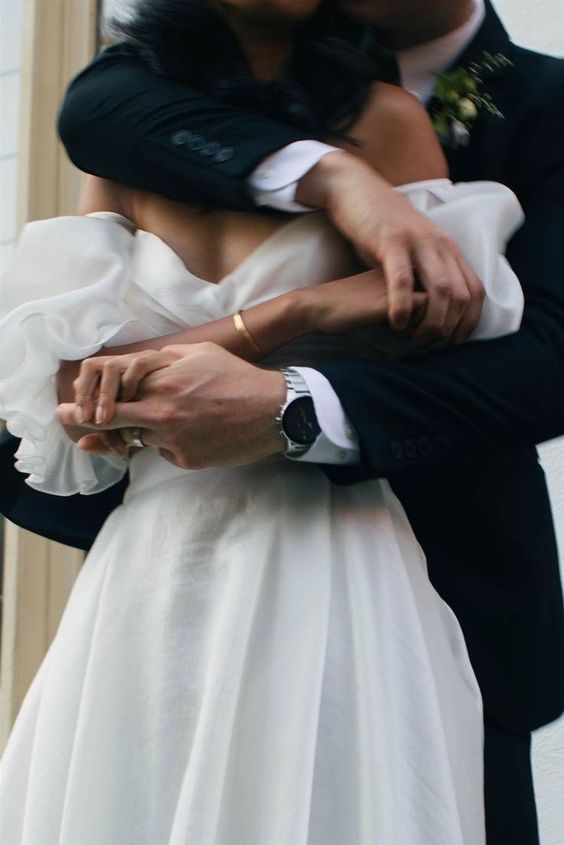
1. The Groom’s Arrival and Procession
- In many cultures, the groom arrives at the ceremony venue in a special way—sometimes on horseback, in a decorated car, or even with a parade of friends and family (like the “baraat” in Indian weddings).
- This symbolizes his journey to claim his bride and the start of the new union.
2. The Groom Paying the Dowry or Bride Price
- Traditional in some cultures (parts of Africa, Asia, and the Middle East), the groom or his family offers a dowry or bride price to the bride’s family as a symbol of commitment and respect.
3. The Groom’s Attire
- Wearing special clothes—like a tuxedo, suit, or traditional garments (kimono, sherwani, kilt)—that often reflect cultural heritage.
- In some cultures, the groom’s outfit includes symbolic colors, patterns, or accessories representing status or family.
4. The Groom’s Speech or Toast
- Delivering a speech thanking guests, honoring the bride, and sharing his feelings and promises.
- It’s a moment to express gratitude and set the tone for the celebration.
5. The First Dance
- The groom shares the first dance with the bride, symbolizing their first steps together as a married couple.
- This tradition can be personalized with a meaningful song or choreographed dance.
6. The Groom Carries the Bride
- In Western tradition, carrying the bride over the threshold is believed to protect her from evil spirits and symbolizes the groom’s role as protector.
7. Groom’s Boutonniere
- Wearing a flower or small decoration pinned to the lapel, often matching the bride’s bouquet, symbolizing unity.
8. Groom’s Gift to the Bride
- Some grooms present a meaningful gift to the bride on the wedding day—jewelry, love letters, or keepsakes—to show love and appreciation.
9. Groom’s Role in Religious or Cultural Rituals
- Participating actively in ceremonies like exchanging garlands (India), breaking the glass (Jewish weddings), or lighting unity candles (Christian weddings).
Main questions about the groom’s role
Ultimately, the groom’s responsibility is to be an engaged partner throughout the wedding journey—committed, supportive, and ready to celebrate with joy.
The best man is the groom’s key support throughout the wedding journey, responsible for helping with planning, organizing the bachelor party, and coordinating the groomsmen. On the wedding day, he ensures the groom stays calm and on schedule, holds the rings, signs the marriage license if required, and delivers a memorable toast at the reception. He also assists with logistics, keeps the energy up during the celebration, and helps make sure everything runs smoothly. Ultimately, his role is to be dependable, supportive, and contribute to a joyful and stress-free experience for the groom.
At a wedding, the groom traditionally throws the bride’s garter during the reception—a counterpart to the bride tossing her bouquet.
Some modern couples choose to skip this tradition or adapt it to better match their style—replacing it with a joint toss (like both tossing confetti or keepsakes), or doing a fun game instead.
Final advice: have fun!
Planning a wedding can feel overwhelming at times, but remember: this is a celebration of your love and the start of an amazing new chapter. Stay present, communicate openly with your partner, and don’t be afraid to inject your personality into every step. Embrace the fun moments, laugh through the challenges, and most importantly, enjoy the process together. After all, the best memories come from sharing this journey with the one you love. So relax, have fun, and let your excitement shine!
Casia Thomas: your luxury wedding planner
Cassia Thomas is a renowned destination wedding planner celebrated for designing luxurious weddings across Europe. Drawing on extensive experience, she seamlessly blends elegance, cultural richness, and meticulous attention to detail. Cassia works closely with top-tier venues and prestigious vendors to execute each celebration with perfection. Her comprehensive expertise in international weddings — from navigating legal processes to crafting cohesive visual concepts — positions her as a trusted guide for couples planning unforgettable events abroad.
Contact the wedding planner Cassia Thomas:
Phone: +33 6 60 39 05 44
hello.kis.wedding@gmail.com






